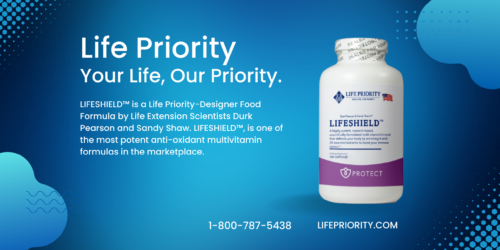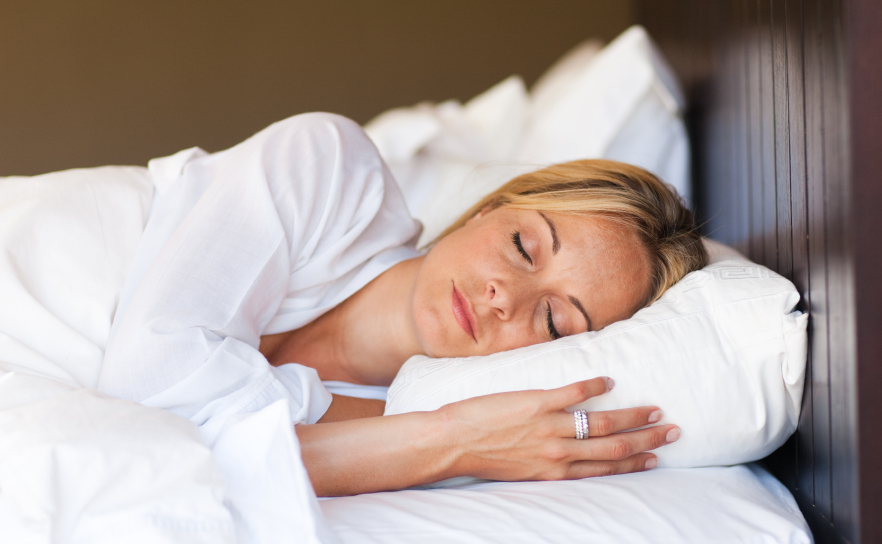

GABA
- by Life Priority
- No Comments
- Post Views: 19
GABA
By Durk Pearson & Sandy Shaw
GABA, gamma-aminobutyric acid, is a substance naturally found in food,A,B such as tea, that is “strongly implicated in the regulation of sleep, with GABA activity emanating from the ventrolateral preoptic nucleus of the hippocampus dramatically inhibiting wakefulness-associated neurotransmitter activity.”1 “several GABA agents are FDA approved for the treatment of insomnia.”1 “Available evidence for the pathophysiology of insomnia points to a disorder of hyperarousal …”1 Hyperarousal would mean a tendency to remain alert and vigilant, which would seriously interfere with getting to sleep.
Interestingly, in a study1 comparing brain cortical GABA levels (through proton magnetic resonance spectroscopy) in persons with and without primary insomnia, mean occipital GABA levels was 12% higher in those with insomnia as compared to those who had no sleep complaints. The authors suggest that the increased GABA levels may be reflective of a relative “GABA resistance” that resulted in an adaptive increase in GABA levels in those with insomnia. The researchers also found that GABA levels correlated inversely with time awake after sleep onset in persons with primary insomnia and also reported (for the first time, they say) that this relationship is also present in a control group without insomnia. This means that the higher the GABA levels, the less time spent awake after sleep onset in both a group of people with insomnia problems and those without.
The Sleep-Switch Model of GABA Inhibitory Activity in Sleep vs. Arousal
A model was proposed1G to depict the switch from inhibitory to arousal activity in various areas of the brain that regulate sleep vs. waking. It was suggested that the sleep nucleus (VLPO) and the arousal nuclei (TMN, LC, and raphe nuclei) are mutually inhibitory. Thus when the inhibitory drive to the VLPO is high, this reduces the inhibition on the arousal areas, resulting in the wake state. When the inhibitory drive to the VLPO is decreased, the arousal centers are inhibited and sleep occurs. The action of GABA at inhibitory receptors plays a major role in this switch. As noted by the author,1G “GABA(A) receptors are the molecular targets for almost all of the hypnotics approved for the treatment of insomnia.” (Note: this was in 2007.)
As noted in paper #1G, the neurons of the VLPO express the inhibitory transmitters GABA and galanin and project to inhibit the arousal nuclei (TMN, LC, LDT, PPT, PcF, and raphe nuclei.” The VLPO is reported1G to be significantly smaller in elderly humans, which the author suggests may be associated with altered sleep patterns in older individuals, possibly resulting in less sleep and more wakefulness.
GABA Controls the Contribution of Maturing Neurons to the Adult Hippocampal Network
New neurons are continuously generated in the dentate gyrus of the hippocampus throughout life in mammals. This is important for continued learning and formation of new memories. A very recent paper1B reports that the development of GABA inputs onto these adult-born neurons is likely a “significant factor distinguishing young neurons from mature neurons.” As we have written before and is noted in this paper,1B adult-born neurons are more vigorous—exhibiting increased excitability and plasticity—than early-born ones and contribute importantly to several aspects of learning and memory. The experimental data reported in this new paper was summed up: “Combined, these data demonstrate that the unique connectivity of immature GCs [granule cells] affords them a functional role that is different from mature neurons in the DG [dentate gyrus] circuit, a distinction that potentially underlies many of the proposed functions of new neurons in the hippocampal network.” As they further explain, [t]he selective regulation of GABA on the plasticity potential of GCs of different ages is of particular importance in considering how the hippocampal network stores and maintains memories throughout life.”
Another paper1C reported that the presence of GABA(A) receptor deficit in immature neurons of the developing and adult brain “can serve as a common molecular substrate for deficits in adult neurogenesis and behavior indicative of anxious and depressive-like mood states.”
GABA Protection Against Post-Traumatic Stress Disorder
GABA has anti-stress effects. In fact, an earlier paper1D reported that low post-trauma GABA plasma levels was a predictive factor in the development of acute post-traumatic stress disorder (PTSD). The researchers studied 78 road traffic victims on arrival at a traumatology department and assessed them for PTSD 6 weeks later. The same group also evaluated the relationship between post-trauma GABA plasma levels and PTSD at a one year followup.1E As reported in paper #1E, [a]mong patients who met all or nearly all criteria for PTSD at 6 weeks, 75% of those with post-trauma GABA levels above 0.20 mmol/ml no longer met criteria by 1 year. By contrast, among patients whose GABA levels were below 0.20 mmol/ml, 80% met all or nearly all criteria for PTSD at 1 year.”
The researchers1E concluded that “[a] plasma GABA level above 0.20 mmol/ml may protect against chronic PTSD and may represent a marker of recovery from trauma.”
A further paper on the subject of PTSD and GABA1F reports that patients with PTSD have been found to have lighter sleep (more stage 1, less stage 3) and elevated REM density as compared to controls. Moreover, other studies performed by the authors of paper #1F have been said to document an association between fragmented REM sleep with the development of PTSD during the early aftermath of trauma.
The Complexity of GABA is One of Many Substances Involved in Sleep Regulation
As pointed out in another paper,2 GABA is one of many substances that are considered SRS (Sleep Regulatory Substances). The requirements for being an SRS include: “1) the substance and/or its receptor oscillates with sleep propensity; 2) sleep is increased or decreased with administration of the substance; 3) blocking the action or inhibiting the production of the substance changes sleep; 4) disease states, e.g., infection, associated with altered sleep also change levels of the putative SRS; and finally 5) the substance acts on known sleep regulatory circuits.”2
Inflammatory cytokines, such as TNF-alpha and IL-1, are associated with sleep loss and they accumulate with sleep deprivation. Under inflammatory conditions, neurons become more or less sensitive to neurotransmitters and neuromodulators such as adenosine, glutamate and GABA.2 A good summation of the complex stew of which GABA is a part that constitutes the sleep recipe is: “… sleep is an emergent property of populations of local neural networks undergoing state transitions.”2
GABA May Decrease Inflammatory Cytokine Production in Autoimmune Diseases
A recent paper2B reported that GABA modulates inflammatory responses in autoimmune diseases such as the non obese diabetic mouse model of type 1 diabetes and, as found experimentally in this study,2B GABAergic agonists “potently ameliorated” the ongoing paralysis of the EAE multiple sclerosis model in mice by inhibiting inflammatory cytokine production by acting directly on antigen-presenting cells (APC).
GABA Levels in the Pontine Reticular Formation are Greater During Wakefulness than During REM Sleep
One of the complexities of sleep is that the levels of SRS vary depending upon the part of the brain you are looking at as well, of course, as the time of day. In a recent paper,3 scientists found an inverse relationship between changes of GABA and acetylcholine (ACh) during REM sleep in the pontine reticular formation (PRF, a brain area importantly involved in the regulation of sleep and wakefulness). This indicates, the authors believe, that low GABAergic tone combined with high cholinergic tone in the PRF contributes to the generation of REM sleep. This supports the hypothesis that GABA levels in the PRF are greatest during wakefulness and lowest during REM sleep. (This particular study was done in cats.)
In another paper4 in which scientists were also investigating sleep regulation in the pontine reticular formation (this time in rats), they found that concentrations of glutamate and GABA in this brain area varied across the sleep/wake cycle. “Regression analysis revealed that decreases in glutamate and GABA accounted for a significant portion of the variance in the duration of NREM sleep and REM sleep episodes.”4 Thus, the authors note, these data support the hypothesis that endogenous glutamate and GABA in the pontine reticular formation contribute to the regulation of sleep duration. The authors cite a study in which decreasing GABA levels in this brain area by blocking GABA synthesis with 3-mercaptopropionic acid significantly decreased wakefulness and significantly increased NREM sleep and REM sleep.4
GABA, a natural constituent of sleep-wake regulation in the brain, is an important member of getting enough productive sleep.
References
- Chuang et al. Antidepressant effect of GABA-rich monascus-fermented product on forced swimming rat model. J Agric Food Chem. 59:3027-34 (2011).
- Zhao et al. Determination and comparison of gamma-aminobutyric acid (GABA) content in Pu-erh and other types of Chinese tea. J Agric Food Chem. 59:3641-8 (2011).
- Morgan et al. Cortical GABA levels in primary insomnia. Sleep. 35(6):807-14 (2012).
1B. Li et al. Development of GABAergic inputs controls the contribution of maturing neurons to the adult hippocampal network. Proc Natl Acad Sci USA. 109(11):4290-5 (2012).
1C. Earnheart et al. GABAergic control of adult hippocampal neurogenesis in relation to behavior indicative of trait anxiety and depression states. J Neurosci. 27(14):3845-54 (2007).
1D. Vaiva et al. Low posttrauma GABA plasma levels as a predictive factor in the development of acute posttraumatic stress disorder. Biol Psychiatry. 55:250-4 (2004).
1E. Valva et al. Relationship between posttrauma GABA plasma levels and PTSD at 1-year follow-up. Am J Psychiatry. 163(8):1446-8 (2006).
1F. Mellman. A human model that suggests a role for sleep in the cognitive neuropsychology of PTSD and recovery. Sleep. 32(1):9-10 (2009).
1G. Harrison. Mechanisms of sleep induction by GABA(A) receptor agonists. J Clin Psychiatry. 68[suppl. 5]:6-12 (2007).
- Clinton et al. Biochemical regulation of sleep and sleep biomarkers. J Clin Sleep Med. 7(5):Supplement S38-S42 (2011).
2B. Bhat et al. Inhibitory role for GABA in autoimmune inflammation. Proc Natl Acad Sci USA. 107(6):2580-5 (2010).
- Vanini et al. Endogenous GABA levels in the pontine reticular formation are greater during wakefulness than during rapid eye movement sleep. J Neurosci. 31(7):2649-56 (2011).
- Watson et al. Sleep duration varies as a function of glutamate and GABA in rat pontine reticular formation. J Neurochem. 118(4):571-80 (2011).
© Copyright Durk Pearson & Sandy Shaw.® All rights reserved.
Information provided for educational purposes only. *These statements have not been evaluated by the FDA. These products are not intended to diagnose, treat, cure, or prevent any disease.
*The products and statements made about specific products on this web site have not been evaluated by the United States Food and Drug Administration (FDA) and are not intended to diagnose, treat, cure or prevent disease. All information provided on this web site or any information contained on or in any product label or packaging is for informational purposes only and is not intended as a substitute for advice from your physician or other health care professional. You should not use the information on this web site for diagnosis or treatment of any health problem. Always consult with a healthcare professional before starting any new vitamins, supplements, diet, or exercise program, before taking any medication, or if you have or suspect you might have a health problem.
Sign up for emails from OneHeartNetwork.com:
By providing your email address, you are agreeing to our privacy policy.
RECOMMENDED




